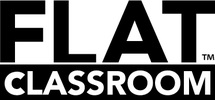by Jennifer Kasprick
The three R’s of global collaboration are: Receive, Read, and Respond.
The global community can be involved in a student project by simply following what students are doing or by taking more active roles as keynote speakers, judges, or expert advisors.
Students can assist in managing a project by organizing, inspiring, motivating and making decisions about contribution and collaboration. Students benefit from peer review. Sometime students listen better to their peers than they do a teacher. Teachers can benefit from student managers by dividing up the tasks and delegating to the student manager. Teachers can also benefit from a different perspective from a younger manager.
Different types of students can be encouraged to participate in collaboration. This can happen by teachers holding students accountable, providing guidance in their engagement and requiring students to complete self-assessments. Students can contribute through developing their online profile, researching material, analyzing material, communicating and sharing blog posts and editing and discussing wikis. They can, also, demonstrate effective digital citizenship. Students can be assessed based a rubric that explains the requirement of their contribution in the areas stated above.
It is important to link authentic assessment models with collaborative projects because it encourages student participation. Students need to be assessed based on quantitative and qualitative factors. For a global project to be successful students need to connect frequently but they also need to assure their connections and contributions are qualitative.
The three R’s of global collaboration are: Receive, Read, and Respond.
The global community can be involved in a student project by simply following what students are doing or by taking more active roles as keynote speakers, judges, or expert advisors.
Students can assist in managing a project by organizing, inspiring, motivating and making decisions about contribution and collaboration. Students benefit from peer review. Sometime students listen better to their peers than they do a teacher. Teachers can benefit from student managers by dividing up the tasks and delegating to the student manager. Teachers can also benefit from a different perspective from a younger manager.
Different types of students can be encouraged to participate in collaboration. This can happen by teachers holding students accountable, providing guidance in their engagement and requiring students to complete self-assessments. Students can contribute through developing their online profile, researching material, analyzing material, communicating and sharing blog posts and editing and discussing wikis. They can, also, demonstrate effective digital citizenship. Students can be assessed based a rubric that explains the requirement of their contribution in the areas stated above.
It is important to link authentic assessment models with collaborative projects because it encourages student participation. Students need to be assessed based on quantitative and qualitative factors. For a global project to be successful students need to connect frequently but they also need to assure their connections and contributions are qualitative.

 RSS Feed
RSS Feed